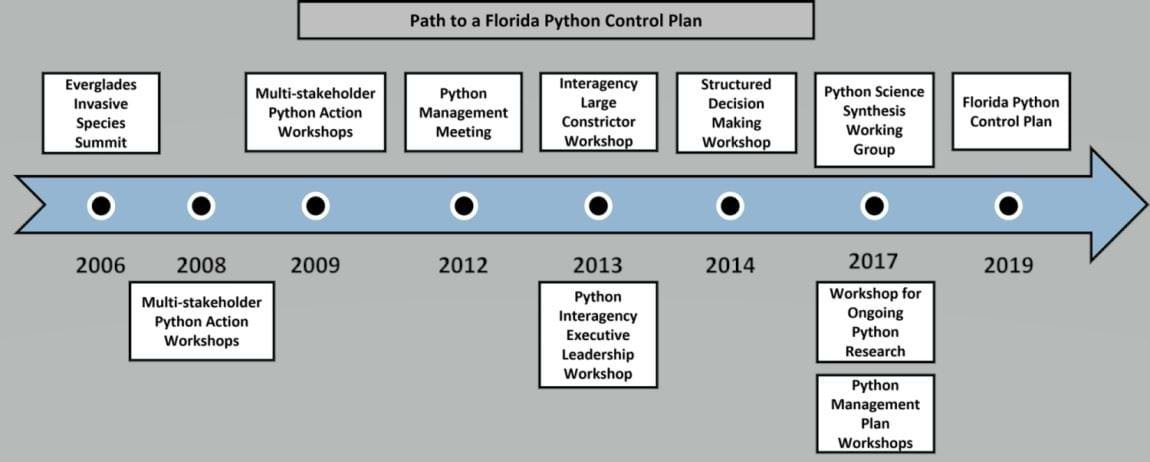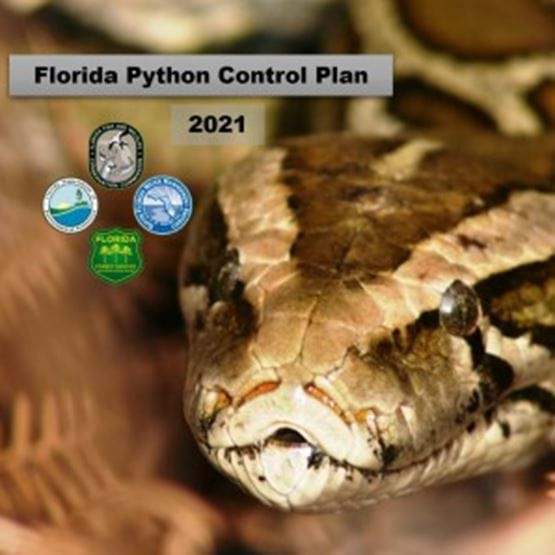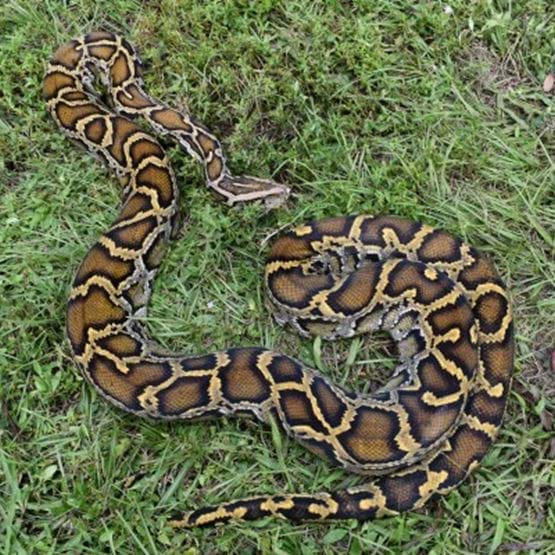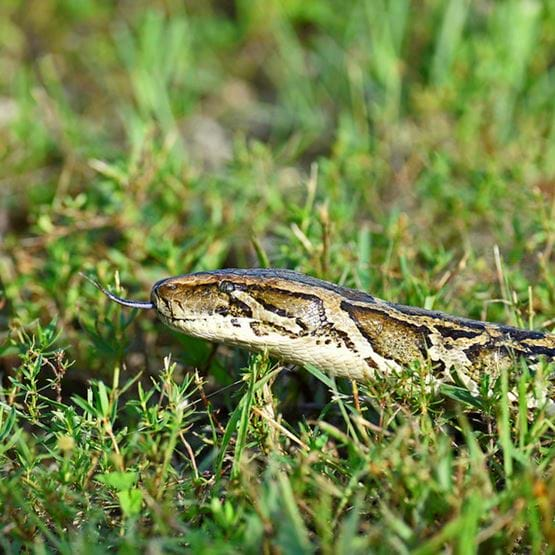FPCP Information
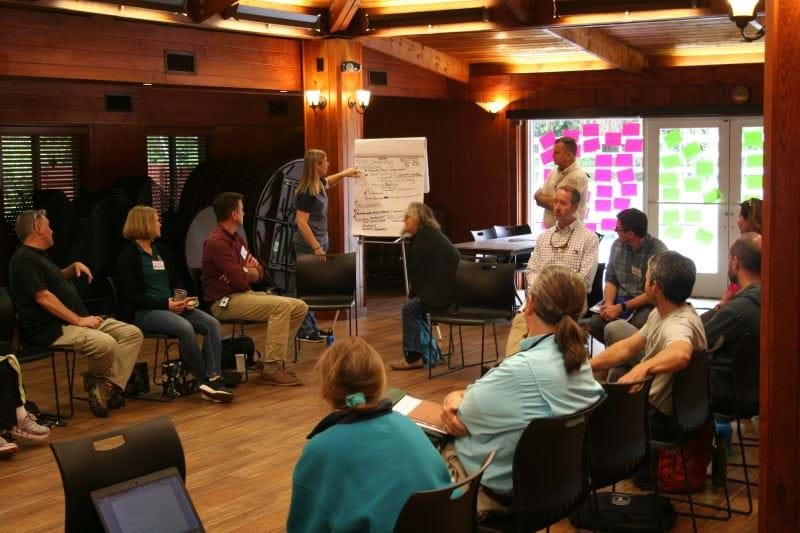
Image courtesy of the Florida Fish and Wildlife Conservation Commission
As pythons are not limited by geopolitical boundaries, a unified approach to python control has been undertaken with the development of the Florida Python Control Plan (FPCP), a Florida state plan that land-managing organizations may choose to adopt, and it represents the collaborative efforts of 15 federal, state and local agencies, tribes, and one non-governmental organization to address the need for a unified, interorganizational plan for control of invasive Burmese pythons. Through working cooperatively, participants can prioritize efforts and leverage resources to combat this widespread invasive species and the threat it presents to the Greater Everglades Ecosystem, those portions of Florida where pythons are not yet established, as well as the Comprehensive Everglades Restoration Plan.
The FPCP was developed during 2019–2021 through a collaborative effort involving land managers representing over a dozen federal, state and local agencies, tribes, and one non-governmental organization. The overarching objective of the FPCP is creation of an interorganizational plan that serves as the foundation for long-term, strategic efforts to control Burmese pythons in Florida. The plan addresses four primary themes of a Burmese python control strategy: Policy and Regulations, Control and Monitoring, Research, and Communication. Goals, strategies, and recommendations were identified collectively under each theme, providing guidance to land managers for achieving steady progress towards python control. An Implementation Section was also developed to provide a framework for execution of the plan.
Strong and sustained coordination among land managers and stakeholders is necessary to effectively manage Burmese pythons. The challenges associated with python control - including extremely low detection probability, remote and hard-to-access habitats, high reproductive output, and few available predators of adult pythons - are compounded by the species' widespread distribution over public and private lands encompassing many geopolitical boundaries with varying levels of management resources.
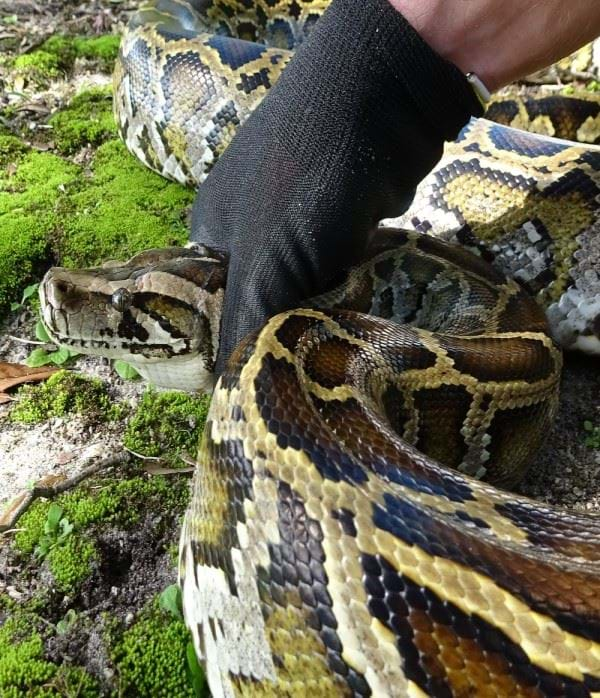
Image courtesy of the Florida Fish and Wildlife Conservation Commission
The desired future conditions for Burmese pythons in Florida include:
- The Burmese python population and range are controlled to minimize or prevent negative impacts to natural resources, human health and safety, and the economy;
- The public is aware of the negative ecological and socio-economic impacts of pythons, is knowledgeable about what to do when they encounter pythons, and supports python control measures;
- Research is supported to advance knowledge of the species, the python invasion, and to develop and refine control tools and technologies;
- Land managers and stakeholders are engaged and empowered to implement appropriate science-based control actions; and
- Increased collaboration and coordination among land managers and stakeholders leads to political and financial support to implement the Florida Python Control Plan.
